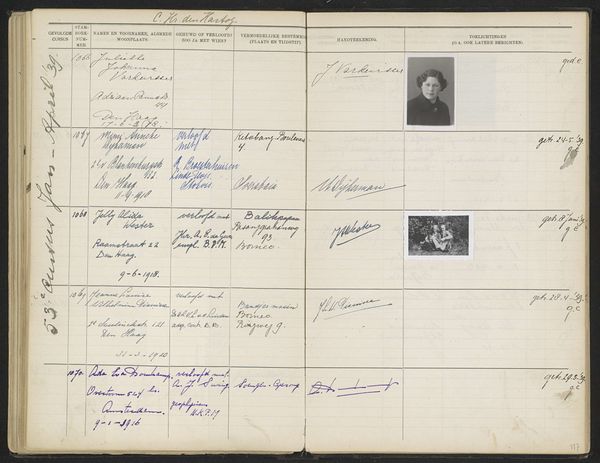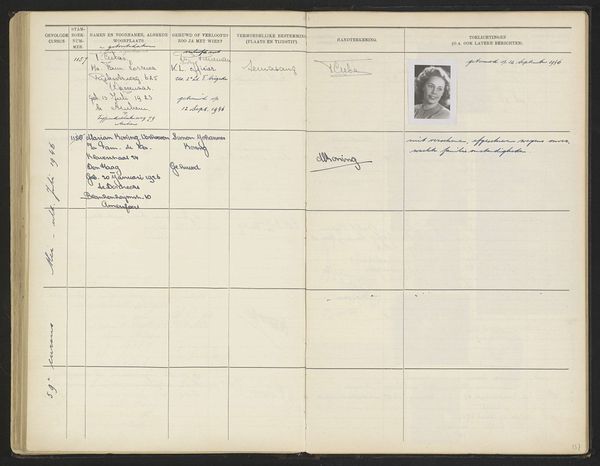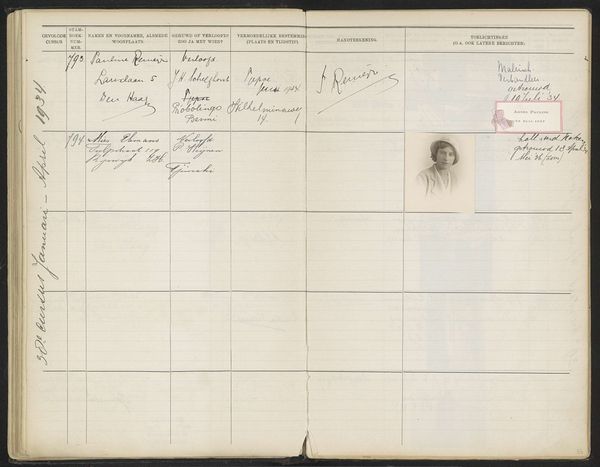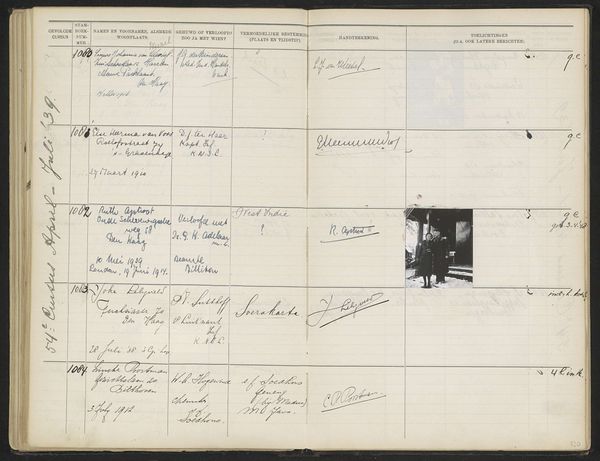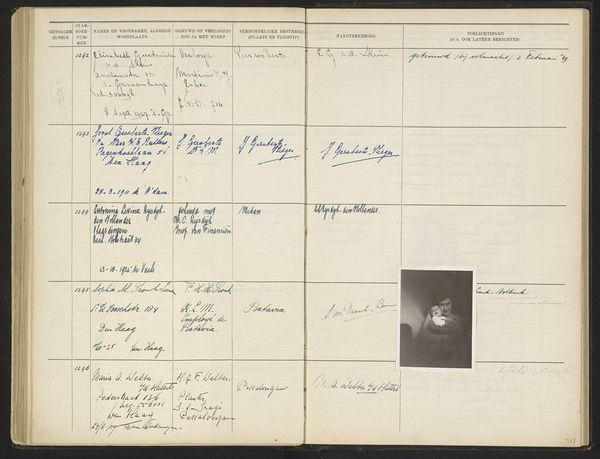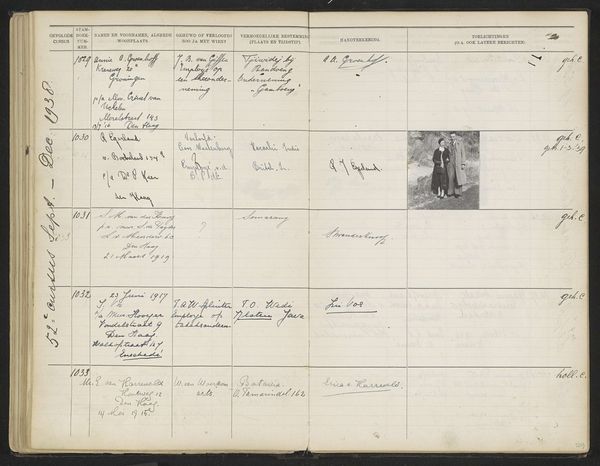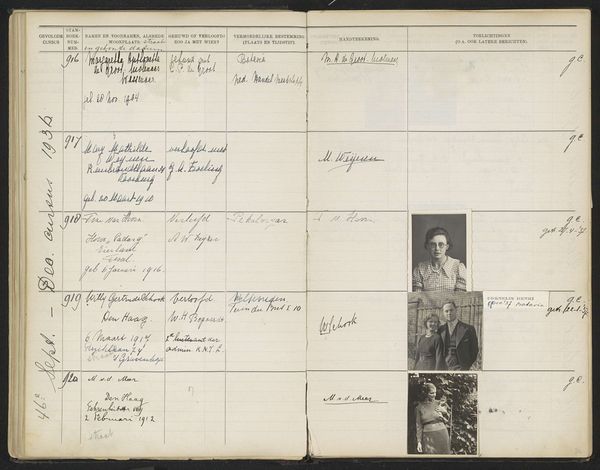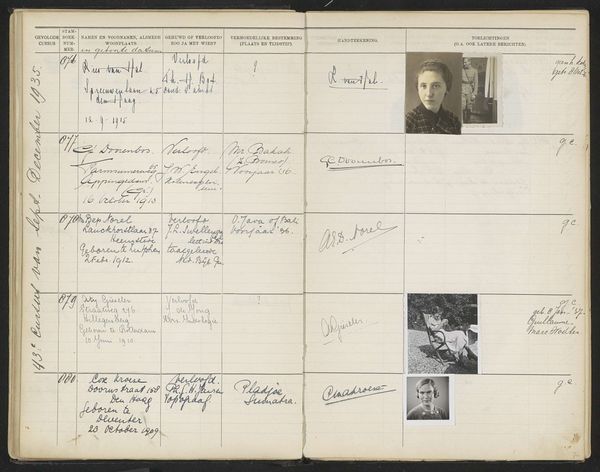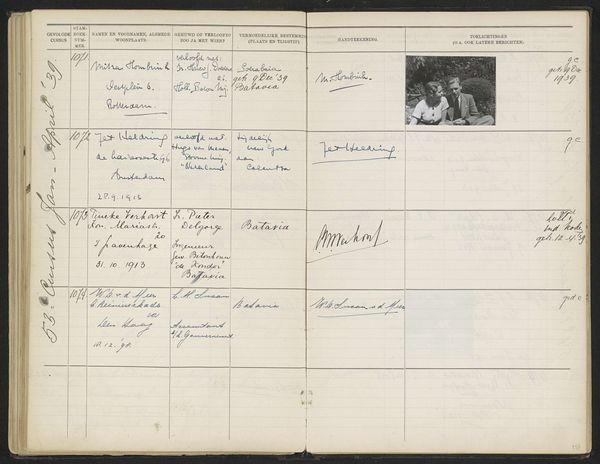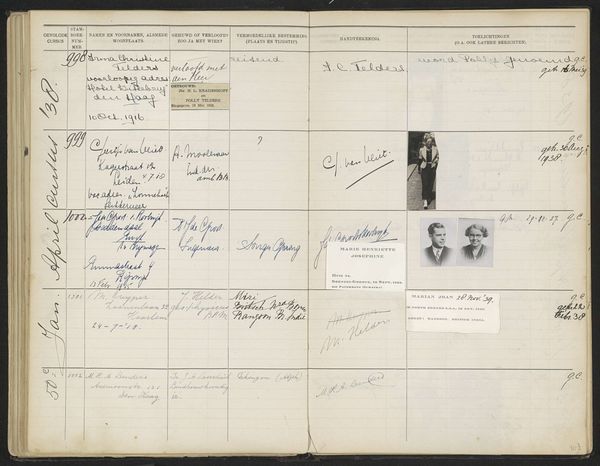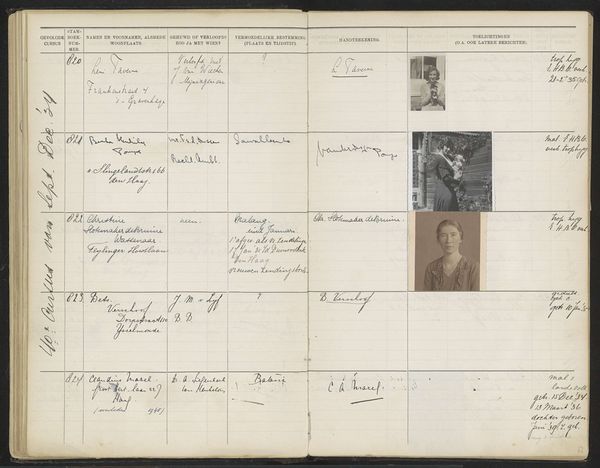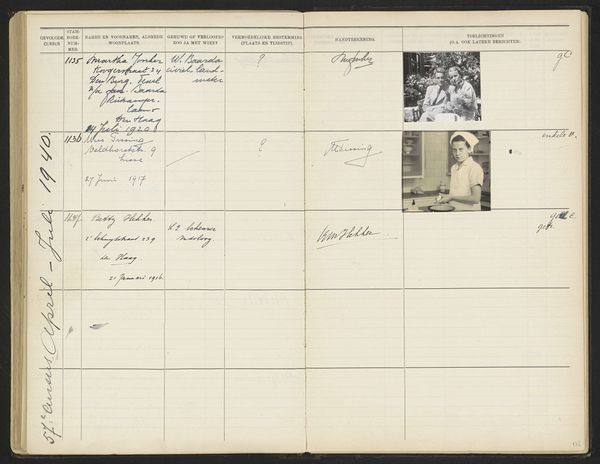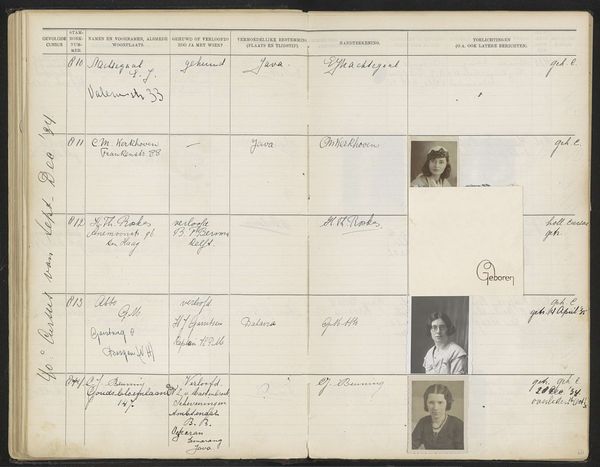
Blad 71 uit Stamboek van de leerlingen der Koloniale School voor Meisjes en Vrouwen te 's-Gravenhage deel II (1930-1949) Possibly 1935 - 1936
0:00
0:00
drawing, paper, photography
#
portrait
#
drawing
#
aged paper
#
hand-lettering
#
sketch book
#
hand drawn type
#
paper
#
photography
#
personal sketchbook
#
hand-written
#
hand-drawn typeface
#
sketchbook drawing
#
storyboard and sketchbook work
#
academic-art
#
sketchbook art
Dimensions: height 337 mm, width 435 mm
Copyright: Rijks Museum: Open Domain
Curator: This intriguing piece, titled "Blad 71 uit Stamboek van de leerlingen der Koloniale School voor Meisjes en Vrouwen te 's-Gravenhage deel II (1930-1949)", possibly from 1935 or 1936, is a page from a student registry, mixing drawing, photography, and hand-lettering on aged paper. Editor: The rigid structure immediately strikes me; the grid layout creates a sense of order and control. There's a clear hierarchy of information communicated by its composition. It appears clinical, yet strangely intimate, too. Curator: Absolutely, the materiality speaks volumes about colonial administration and the regimentation of female education for service abroad. These meticulous records demonstrate the labor involved in managing human resources for the Dutch colonies. We must consider this as part of a larger system. Editor: Precisely. Look at the stark contrast between the handwritten entries and the pasted-in portrait photograph. The contrast creates visual tension—one organic, and the other manufactured. Notice, too, how the light falls, drawing our eye towards this portrait as a focal point in an otherwise documentary aesthetic. Curator: Furthermore, the medium is essential; the combination of hand-drawn type and photographic portrait speaks to evolving technology in colonial record-keeping. It highlights the institution's need for control and identification in a society that relied increasingly on image documentation for social categorisation. Editor: And consider the absences. The partially filled entries suggest the students' transient stories, or the incompleteness of administrative endeavors. Its emptiness begs as many questions as the filled segments. What lies in those unspoken details? Curator: It certainly provides insight into gendered roles in Dutch colonial efforts and the methods of managing the workforce. We must explore what specific skills were developed, for instance, and how were they transferred into material realities in colonial sites. Editor: Thinking about the photograph's placement, within a highly gridded format, transforms its inherent identity. Placed precisely above other information, it signifies a person within a data file: face as label, life compressed. Curator: The piece is so very rich with historical resonance that helps us interpret colonial projects through visual tools employed by women. Editor: Indeed. "Blad 71..." offers more than historical data—it presents a canvas to examine power, documentation, and personal experience through the lens of form and composition.
Comments
No comments
Be the first to comment and join the conversation on the ultimate creative platform.
